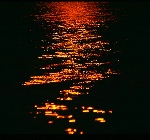Turn around!
I already said in a previous tip that there may be a big difference between what we see without a camera and what we find on the picture when we look at a print or slide.
Digital cameras at least give us a chance to realise this on the spot while at home it may be too late to correct the picture.
This is partly due to the brain’s ability to correct the perspective of an image.
Mostly, this works fine in real life, but when applied to flat photos or pictures it may give wrong results. This is how optical illusions work.
MC Escher was famous for drawing mathematically constructed images that our brain couldn’t deal with - e.g. water flowing endlessly downward .
Erwin Purucker has collected some other optical illusions.
The outcome of this is that we often do not realise the falling lines of a building or the slight angle in the horizon. On the finished picture, a slightly skewed horizon will be very prominent!
So much for perspective. But, even more annoyingly (well at least when taking photographs), our brain is quite good at filtering out irrelevant data.
How often did we look at a print and wondered why we took it? The scenery looked absolutely breathtaking and we are quite sure that this ugly garbage bin wasn’t there at the time?
Using a tripod and examining everything in the viewfinder certainly helps and with more experience we get better at seeing more such details.
We can become too single-minded doing this though! It may well be that we concentrate so much on an image that we do not see something much more interesting behind us.
When in the Chilean altiplano, I made our driver go to a “salar” just before sunset to capture the sun going down over the lake. This wasn’t quite a spectacular as I hoped though. However, when I turned around, I saw this:

Quite beautiful, isn’t it? I wouldn’t have liked to miss that shot! So, it may be a good idea to turn around from time to time.

